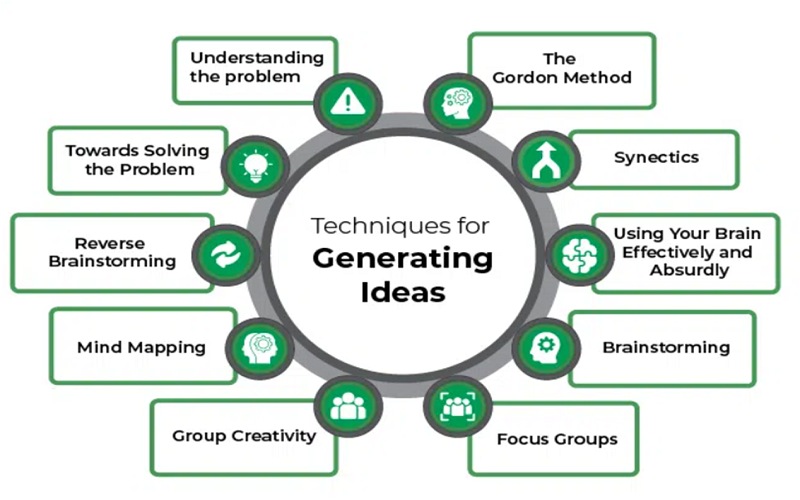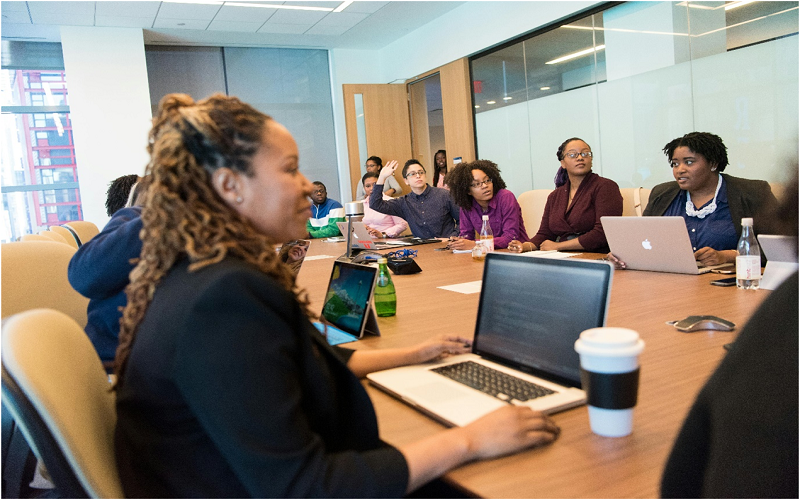Are you starting a research project and prepared to venture into unfamiliar academic territory, but finding it difficult to choose a topic? You are not alone in being locked in your brain, so don’t panic. Using brainstorming techniques to generate innovative research topic ideasis a science and an art that requires a blend of structured methods, creativity, and strategic thinking. Continue reading to stimulate your curiosity, improve your focus, and turn the ambiguous into the vivid.
Understand The Landscape Of Brainstorming Techniques
Brainstorming is one of the finest strategies to develop ideas while deferring judgment. When brainstorming in groups, it is extremely helpful since your combined efforts can produce more ideas more rapidly than when you think alone. One person’s suggestion may catch others’ attention and provoke a chain reaction that would not have occurred during a solitary brainstorming session.

Source: geeksforgeeks.org
Here are a few things about brainstorming you must remember:
It Is The Pillar Of Creative Thought
Before you can become an expert in brainstorming, it’s critical to understand its fundamentals. Brainstorming is more than just throwing ideas around; it’s a structured process designed to foster creativity in controlled settings. The success of brainstorming as a research tool is examined, along with the psychological underpinnings of it. This includes hypotheses from cognitive psychology describing how our capacity to connect seemingly unrelated ideas leads to innovative solutions.
It Helps You Get Acquainted With Traditional Methods
These methods, which vary from the tried-and-true mind-mapping approach to the novel reverse-thinking method, have helped many academics and researchers come up with ideas for fresh and engaging study themes.
It Allows You To Use Modern Digital Tools
Technology has altered how academic research is conducted, and brainstorming is no exception. Coming up with and organizing ideas is now easier than ever thanks to these technologies, which vary from online collaboration platforms that facilitate distant brainstorming sessions to software that employs artificial intelligence to suggest study themes.
4 Ways To Apply Brainstorming Techniques In Research
Here are some ideas for using brainstorming sessions to look into topics that will catch people’s attention:
1. Brainstorm Research Questions
After a multitude of ideas have been gathered, the next step is to refine them into researchable questions. This important transition involves focusing on a smaller number of issues, formulating doable, engaging, and career-relevant questions, and evaluating each idea’s feasibility, distinctiveness, and application.
2. Read Case Studies
Real-world examples are the best way to illustrate the value of brainstorming. Case studies will offer thought-provoking accounts of cases from various academic fields where the application of brainstorming techniques has led to the development of original research ideas. These examples not only demonstrate the techniques’ effectiveness but also their flexibility across other sectors.
3. Do Initial Background Research
Examine the study projects completed by other students in the area of interest. Make lists of ideas for high school students’ passion projects. The purpose behind this is to give you an idea of what may be done, not to copy exactly what you discover. While coming up with anything original could be challenging, you can always find a way to develop a concept further by posing novel questions or by fusing previously unexplored elements.
4. Refine And Prioritize Your Ideas
Once you’ve compiled your list of ideas, go over each one and rank them according to their viability and possible effect. Which concepts best fit your objectives? Which of these, considering your time and resources, seems feasible? Are there any ideas you might modify to better meet your objectives and scope? Have others previously implemented your ideas? Is it possible to change it to make it seem different? Pick the topic once you have answers to all these questions.
Using Collaborative Techniques For Brainstorming
Here are two methods you can use to collaborate and enhance your brainstorming sessions:
Group Dynamics
Group brainstorming sessions may yield a plethora of diverse ideas or devolve into a chaotic diversion, depending on how they are conducted. Among the subjects discussed were how to encourage each participant’s contribution, prevent groupthink, and facilitate inclusive discussions. Learn how to create stimulating and productive meetings by utilizing the diverse experiences and perspectives of each member.
Hybrid Brainstorming
In today’s heterogeneous academic environments, combining traditional and digital brainstorming methodologies might provide superior outcomes. How using mind mapping software in conjunction with in-person brainstorming sessions may enhance the breadth and depth of ideas generated. We’ll provide practical examples of how combining these methods may facilitate a more thorough investigation of potential research volunteers.
What Are The Challenges Faced During Brainstorming Sessions?
There are several obstacles that brainstorming sessions might present. Here are some strategies to get beyond them:
Deal With Mental Blocks
Even seasoned academics might go through periods of inactivity or mental blocks. One strategy to combat them may be to change your environment or seek inspiration from other people. Reinvigorate your creative processes and maintain the flow of your idea production to ensure that you consistently generate new and relevant topics.
Unlock Novelty And Relevance
One of the biggest challenges is making sure the ideas you generate during a brainstorming session are both original and relevant to the discussions taking place in your sector. Make sure you are assessing the relevance and current status of your ideas by using databases, conferences, and publications. Find out how to verify that the subjects of your study are original and that they align with the debates taking place in academia.
Staying Focused
It may be difficult to stay focused during brainstorming sessions, particularly when conversations stray from the subject at hand or take on a life of their own. This loss of concentration might reduce the efficacy of the brainstorming session, resulting in unfinished concept development or missed deadlines. Offering mind mapping or whiteboarding tools can enhance the session’s engagement and stimulate the development of ideas, regardless of the method or timing of brainstorming.
Personality Differences
In group brainstorming sessions, personality differences can occasionally cause disputes because dominant people may dominate conversations, leaving introverts feeling marginalized. And then there’s the way you think. Innovative thinkers may find it difficult to understand the larger picture, whereas analytical thinkers may reject innovative ideas too fast. Promote organized brainstorming sessions with well-defined guidelines to guarantee equitable involvement.
Ready For A Successful Brainstorming Session
Brainstorming is an essential first step in your research approach that may transform the abstract into the concrete. To comprehend the prerequisites, make sure you have finished a Professional Doctorate in Teaching before beginning your research. Remember that the key to successful brainstorming is to allow oneself to freely explore ideas while making use of the tools and strategies that may help structure this process.

